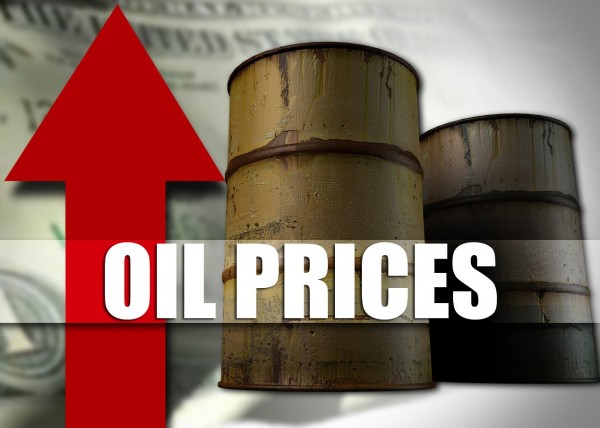Oil prices surged to their longest winning-streak in more than a month as the weakening dollar continues to fire up a rally despite a historic glut of oil.
U.S. oil pushed to the verge of $50 a barrel for the first time since March 9. Four straight sessions of gains matched a winning streak from late January and early February. The market hasn’t had a five-session winning streak since June, when Islamic State militants were threatening the Iraqi capital.
Middle Eastern conflicts could have played a role Wednesday as news spread of Saudi Arabia building up forces near Yemen, said trader Tariq Zahir. But the dollar was likely the main factor behind the rally, Mr. Zahir and others said.
Oil has been rallying for most of the past week, since the Federal Reserve ratcheted back expectations for a rate increase. That news started the dollar’s retreat from a historic high, which has since fueled an inverse price move in oil.
Oil prices moved in tandem with the dollar, especially in the past four months, analysts said. Dollar-priced commodities like oil become more affordable for holders of other currencies as the dollar depreciates.
Some traders have been buying on expectation of the tandem move. Others have been buying oil simply because they are looking for other trades now that the dollar’s long rally may be over, traders and brokers said.
"It’s the hope of U.S. dollar going down and production going down in the U.S.—without [the traders] fully thinking about it,” said Mr. Zahir, who is bearish on oil prices.
Light, sweet crude for May delivery settled up $1.70, or 3.6%, to $49.21 a barrel on the New York Mercantile Exchange. That is its highest settlement since March 9.
Brent, the global benchmark, gained $1.37, or 2.5%, to $56.48 a barrel on ICE Futures Europe, its highest settlement since March 12.
It could be a panic move and a mistake, said Bob Yawger, director of the futures division at Mizuho Securities USA Inc., comparing the rise to the last winning streak when traders bought into oil as rig counts started to fall precipitously. With rigs out of work, hopes grew that production would soon decline. Instead, production has kept growing.
"They think they have this newfound gem of an information point, and then they realize” the fundamentals rule, Mr. Yawger said.
The market briefly lost ground on news that U.S. producers added to a historic glut, but rebounded within about 90 minutes and kept rallying for the rest of the afternoon.
U.S. oil inventories rose by 8.2 million barrels in the week ended March 20 to 466.7 million barrels, the U.S. Energy Information Administration said, outdoing a 5.6-million-barrel increase expected in a Wall Street Journal survey of traders and analysts.
Stockpiles are at a high in weekly data going back to 1982. In monthly data, which don’t exactly line up with weekly data, inventories haven’t been this high since 1930.
Stockpiles in Cushing, Okla., a key storage hub and the delivery point for the Nymex contract, rose by 1.9 million barrels to 56.3 million barrels, adding to its highest level on record in data going back to April 2004. The EIA said in September that Cushing’s working storage capacity was 70.8 million barrels.
Domestic crude production also slightly edged out the weekly record it set last week of 9.4 million barrels.
"Bottom line, we’re filling up those stockpiles and as long as refinery operations are subdued, we’re going to see these” additions, said Mark Waggoner, president of brokerage Excel Futures. "This is about the time we ought to sell.”
Gasoline stockpiles fell by 2 million barrels, more than the 1.7 million-barrel drop expected by analysts surveyed by the Journal.
Front-month gasoline futures settled up 2% at $1.8365 a gallon.
Distillate stocks, including heating oil and diesel fuel, fell by 34,000 barrels, less than the 500,000-barrel drop that analysts had expected.
Diesel futures settled up 1.3% at $1.7283 a gallon.
(wsj.com)
ANN.Az
Follow us !











